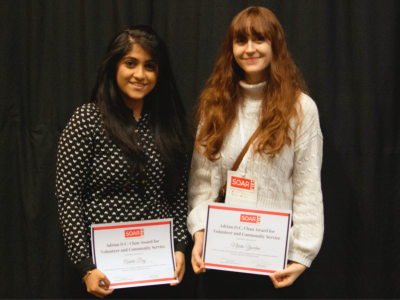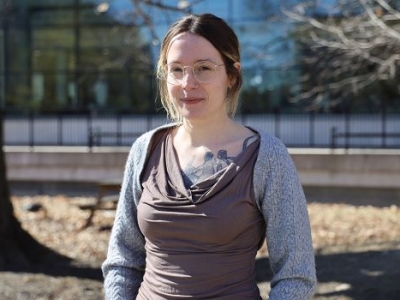 Varsha Chaugai heard about Carleton’s master’s program in biomedical engineering from her home in Nepal.
Varsha Chaugai heard about Carleton’s master’s program in biomedical engineering from her home in Nepal.
“Coming from a third world country with poor health care, I always wanted to improve the quality of life and care back home,” says Chaugai. “I had heard that North American schools offer a good education in the field of biomedical engineering. Carleton was my top choice because the research carried out here catered to my interests and it’s also one of the most reputed institutions in Canada.”
Chaugai, who graduated on November 10, is researching factors that affect the treatment of irregular heartbeats in the hopes that her research could eventually help save lives.
When people are experiencing abnormal heart rhythms, they are often given an electrical shock to restore a normal rhythm. That treatment is called defibrillation. In order for this to happen, sufficient electrical current needs to reach the heart. However, tissues (especially fatty tissues) can resist the flow of the electrical current. That property, which was the main focus of Chaugai’s thesis, is called impedance.
Chaugai explains that the electrical current conduction in the human chest is like the flow of water through a hose. Chaugai explains: “You can imagine the size of a hose as impedance and flow of water as current. If the size of the hose is small, lesser flow of water is seen and vice versa. Likewise, the amount of current that is going to reach the heart is dependent on the impedance of the body tissues.”
The novelty of Chaugai’s research is that it shows how the current travels in the chest and the way the impedance affects the current flow in the heart.
Chaugai worked with other researchers from Carleton and University of Ottawa Heart Institute.
Says Chaugai: “Our results suggest that it is going to be difficult to restore normal heart rhythm in larger patients with a high content of fat tissues, since the amount of current in the heart is going to be less. We also suggest a way to solve this problem, which is by changing the position of the electrodes through which the current is given to the chest.”
“These findings can be employed to improve the success rate of the treatment process in hospitals,” points out Chaugai. She says that the Electro-Physiology group and the Department of Biomedical Engineering at the University of Ottawa Heart Institute have shown strong interest in implementing the results of the research.
Chaugai says her supervisors, Drs. Andy Adler, Adrian Chan, and Timothy Zakutney, “are excellent researchers and their support and guidance have been invaluable throughout my studies. My overall experience in biomed at Carleton has been a process of learning, discovering and creating and has been one of the best experiences I have ever had.”
Chaugai is thinking of doing a PhD but also wants to apply her knowledge to help solve problems related to the biomedical industry.
More information about the Master of Applied Science in Biomedical Engineering is available on this website.
Tuesday, October 30, 2012 in Grad Student Research, News
Share: Twitter, Facebook




